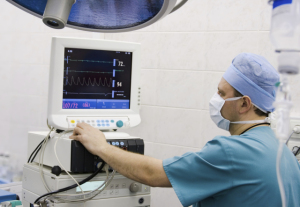by
Olga Deshchenko, DOTmed News Reporter | August 22, 2011
From the August 2011 issue of HealthCare Business News magazine
After graduating medical school, my father joined the anesthesiology department of a small Ukrainian hospital and stayed there until immigrating to the United States in 1999.
My dad is no longer an anesthesiologist but he still works in a hospital, where curious colleagues often inquire about the differences in health care between the U.S. and his homeland.
“In Ukraine, medical practice is an art,” he always says. “In America, it’s a science.”
For years, I couldn’t figure out what he meant by this response. But it made more sense after he described how his department functioned.
Anesthesiologists relied on Soviet-era drug delivery systems, archaic enough to warrant display in a surgical museum. Ventilation was a manual practice. And patient monitoring devices were mere items on a wish list – throughout the procedure, the anesthesiologist or nurse had to regularly check the patient’s vitals.
New anesthesia devices were slow to reach hospitals in the southern tip of Ukraine, meaning doctors had to work with what was available and often, fall back on creative solutions.
Fortunately today, Ukrainian anesthesiologists have more access to innovative anesthesia devices for precise drug delivery and automatic patient monitoring.
Meanwhile, here in the U.S., the spotlight on quality improvement in health care is triggering a role shift in the profession. As a result, anesthesiologists are being held to a higher standard of accountability.
Dr. Robert Goldstein, chief medical officer and executive vice president of Somnia Anesthesia Services, a physician-owned anesthesia management company, likens anesthesiologists to airline pilots. For the most part, they have been anonymous to their patients. And just like airplane passengers trust pilots to safely bring them to their destination, patients expect anesthesiologists to safely manage them through a surgical procedure.
But today, Goldstein says, “People want to know who their anesthesiologists are,” and their performance greatly contributes to the facility’s reputation in the community.
At the same time, hospitals are looking to trim spending, a demand that doesn’t spare anesthesia departments. “A tremendous challenge anesthesiologists face is trying to balance our patients’ needs for safety by using more complex and costly machines in patient care with the increased cost of the care,” Dr. Charlotte Bell, chair of the American Society of Anesthesiologists’ Committee on Equipment and Facilities, told DOTmed News via e-mail.
